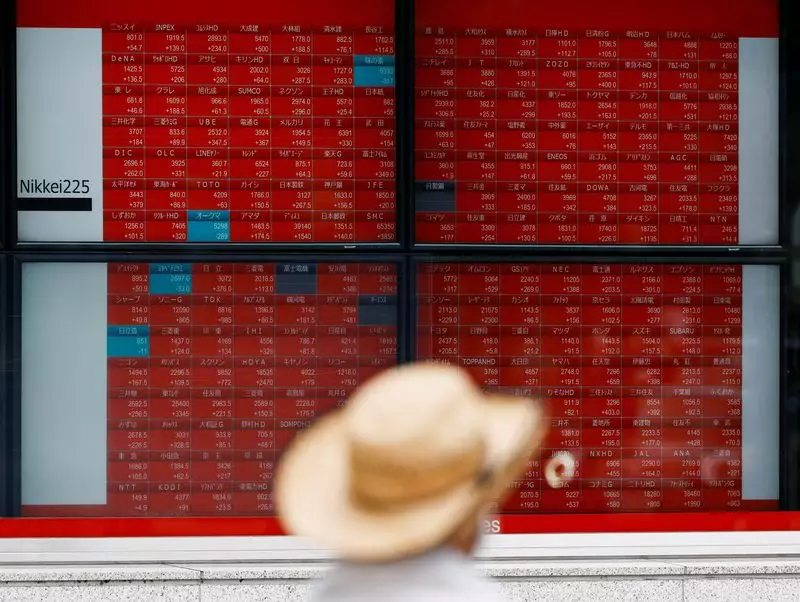In recent market activity, a noticeable upward trend has been observed in Japanese equities, with robust gains on the Nikkei index. This surge can be attributed to a combination of factors, most notably a declining yen, which has sparked optimism for Japanese exporters. As global investors scrutinize monetary policies, the implications of these movements resonate throughout the broader Asian markets. Reports indicate that the yen experienced a downturn, trading around 146.84 against the dollar, marking its highest levels in approximately a month. This depreciation, influenced by remarks from Japan’s newly elected Prime Minister Shigeru Ishiba, signals a cautiously optimistic outlook on future monetary policy adjustments.
The commentary from Ishiba, alongside insights from Bank of Japan (BOJ) Governor Kazuo Ueda, reflects a collective stance suggesting that significant rate increases are unlikely before 2025. Analysts posit that this dovish stance eradicates immediate tightening fears from the equation, setting a favorable stage for the dollar-yen dynamics. As Tony Sycamore from IG noted, this positions the dollar more aggressively within the market, primed for a potential upward trajectory towards previous highs seen in mid-August.
While Japanese stocks have thrived, broader indicators within Asia reveal a mixed landscape. The MSCI Asia-Pacific index excluding Japan has recently reported a 1% decline, demonstrating the volatility and varied performance across the region. Significant contributors to this downturn include the noticeable retreat of Hong Kong’s Hang Seng index, which after soaring by 6.2%, dipped 2.5%. This fluctuation underscores the unpredictable nature of market reactions to external fiscal stimuli, particularly following China’s recent announcements geared towards economic revitalization.
Interestingly, while China’s mainland markets observed a holiday cessation, the Hang Seng’s rollercoaster behavior could be interpreted as a correction following an exuberant bounce-back. Despite this dip, it’s worth noting that the index’s overall performance has catapulted it to an approximate 30% increase over just a few weeks, a testament to the potential for recovery amidst a stagnating economic backdrop.
Turning westward, the U.S. labor market reports have elicited a cautious response among investors, particularly in the fixed-income sector. Recently released private payrolls data has bolstered confidence in economic resilience, thereby diminishing the concerns regarding significant downturns in forthcoming non-farm payroll indicators. This report was accompanied by a slight uptick in Treasury yields, reflecting investor sentiment towards a robust labor market, a crucial aspect that influences monetary policy decisions.
As geopolitical tensions rise, particularly in the Middle East, U.S. Treasury bonds are witnessing an influx of safe-haven investments. The tragic developments in Israel, particularly the loss of soldiers during operations in southern Lebanon, amplify the uncertainty in global markets. The rippling effects of such geopolitical events cannot be overlooked, as they inevitably affect investor behavior and asset reallocation. As a result, recent Treasury yields remain relatively stable, with expectations for future Federal Reserve adjustments continuing to evolve, influenced by this labor data and ongoing geopolitical concerns.
In the commodities sphere, oil prices have seen a notable increase driven by fears surrounding supply disruptions fueled by ongoing Middle Eastern conflicts. With Brent crude prices inching towards $74.68 per barrel, market participants are closely monitoring these developments, which carry the potential for transient price surges or extensive volatility depending on the geopolitical landscape.
Moreover, the precious metals market displays an intriguing narrative as gold hovers near historic highs. A significant rally in gold prices signals market wariness and a preference for tangible assets amidst destabilizing news. Investors are inherently gravitating towards gold, underscoring its traditional role as a hedge against inflation and economic uncertainty.
This complex interplay of stock performances, foreign exchange dynamics, labor market indicators, and commodity price fluctuations encapsulates the intricate choreography of today’s global financial markets. As trajectories become increasingly intertwined, stakeholders must remain vigilant and adaptive to emerging trends and potential disruptions in this continuously evolving economic landscape.

